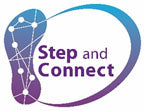Helping Improve Physical Activity during Social Isolation:
Education and Resources
One of my session’s today made it clear how much social isolation can lead to sedentary behavior and it is our job to make sure we can support our patients, friends, family member’s with resources and think “outside of the box” to improve physical activity during this time.
She couldn’t figure out Zoom, she hasn’t seen her grandchildren and hasn’t been to a gym in months, I guess I shouldn’t of been surprised of her decline in activity and overall function and balance. She walked in saying she had pain and could hardly get comfortable sitting in the chair. After a few stretches, strengthening, balance and walking exercises she started to look more like the person I knew months ago.
Researchers from the University of Sao Paulo in Brazil recently reported on the dangers of physical inactivity for older adults during COVID-19. Their paper was published in the Journal of the American Geriatrics Society.
See the below infographics for a research summary of the effects of inactivity and recommendations for physical activity.


Download Don't let Social Isolation keep you from Being Active handout here.
Download Evidence Based Physical Activity Recommendations here.
Strategies to reduce the potential unhealthy effects of isolation are important.
- Home‐based exercise programs can be invaluable during isolation to maintain or even improve muscle health and functionality and help to prevent falls and hospitalization.
- Clinicians should prescribe home‐based, resistance exercises “as medicine” for all older individuals.
- Remotely tracking and motivating adherence to physical activity programs is also important.
- Here is a list of resources to help with tracking and motivation.
Tracking tools:
National Institute on Aging tracking tools
Apps:
Please share with others the importance of physical activity!

Be the first to comment